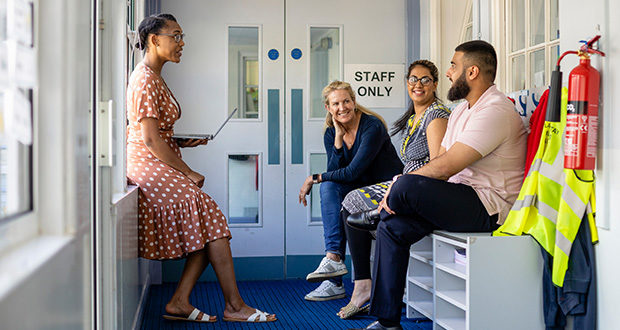Low teacher well-being and high teacher attrition are issues faced by many teachers, schools and educational systems. Pinpointing job supports that are associated with greater well-being and lower attrition among teachers is, therefore, important.
This is particularly true during COVID-19, when teachers are facing many additional challenges at work. My recent study, published in Educational Psychology, set out to examine the role of several job supports and challenges in relation to teachers’ workplace experiences during the first wave of COVID-19 in 2020.
The study examined two important outcomes. One related to teacher well-being and the other to teacher attrition:
- Work vitality was the wellbeing-related outcome and refers to teachers having energy for and feeling excitement about their work. Ideally, we want teachers to experience vitality at work because this is good for them and their students.
- Intentions to quit was the attrition-related outcome and refers to teachers’ plans to leave their current job. Intentions to quit are known to be a precursor to teachers actually choosing to leave their jobs.
Job supports and challenges
In relation to those two outcomes, the study examined the role of two job supports and two job challenges.
The two job supports focused on teachers’ relationships at work.
- Relatedness with colleagues refers to feeling connected to one’s work colleagues.
- Relatedness with students involves feeling connected to one’s students.
The two job challenges are common challenges faced by teachers.
- Time pressure refers to the sense of having inadequate time to complete all the necessary tasks in one’s workload.
- Disruptive student behaviour refers to students’ actions that disturb or distract from learning.
The study used data collected from 325 teachers working in schools across Australia. Data were collected during the first wave of COVID-19 in May, 2020.
In the study, it was anticipated that teachers’ experiences of the two job supports would be associated with greater work vitality and lower intentions to quit, whereas the job challenges would be associated with lower work vitality and greater intentions to quit.
What did the study find?
Results showed, as expected, that relatedness with colleagues was associated with greater work vitality, and that relatedness with students was linked with lower intentions to quit. These findings support prior research highlighting just how important relationships are for teachers.
In contrast, time pressure was associated with lower work vitality and greater intentions to quit. This finding is not surprising given growing recognition that teachers’ workloads have risen to unsustainable levels. It adds further weight to recent calls to reassess teachers’ workload – because as these findings indicate, time pressure is linked with lower teacher well-being and greater intentions to quit.
Disruptive student behaviour was linked with greater intentions to quit, which highlights the importance of ensuring teachers are well-supported for managing students’ behaviour in the classroom.
What was the role of COVID-19?
Alongside the main results, the study also asked teachers about their working situation during the first wave of COVID-19. Some teachers were working in-person as usual, some were working fully remotely due to COVID-19, and others were working in a hybrid approach due to COVID-19 (i.e., teaching some students remotely and some in-person).
Results showed that teachers who were hybrid teaching reported more time pressure than teachers working fully in-person. This was not the case for teachers working fully remotely, who did not report greater time pressure than teachers working fully in-person.
These results make sense considering hybrid teachers were teaching students in-person and remotely, often at the same time. However, the results do raise questions for managing educational disruptions in future. Given time pressure was linked with lower work vitality and greater intentions to quit, schools may want to decrease where feasible the amount of time they use the hybrid approach in future.
Implications for teachers and school leaders
Autonomy-supportive leadership practices are helpful to foster positive interpersonal relationships in schools. For this, school leaders can endeavour to:
- listen to students’ and teachers’ points-of-view,
- provide rationales to students and teachers for the school-level decisions that are made, and
- offer regular opportunities for students and teachers to provide their input.
Schools and education systems may also want to reassess workloads, such as reconsidering the amount of time teachers spend on non-teaching aspects of work (e.g., admin) that have increased in recent years.
Professional learning can help teachers to effectively manage disruptive behaviour. Research* suggests this might involve asking teachers to set specific goals for enhancing their interactions with students, reflecting on their interactions with those students, and refining their strategies and approaches with those students as needed.
Rebecca Collie is Scientia Associate Professor of Educational Psychology in the School of Education (Educational Psychology Research Group) at UNSW.
*Pianta, R. C., Hamre, B. K., & Allen, J. P. (2012). Teacher-student relationships and engagement:
Conceptualizing, measuring, and improving the capacity of classroom interactions. In S. L.
Christenson, A. L. Reschly, & C. Wylie (Eds.), Handbook of research on student engagement (pp. 365–386). Springer.
Email [email protected]
 Education Review The latest in education news
Education Review The latest in education news
